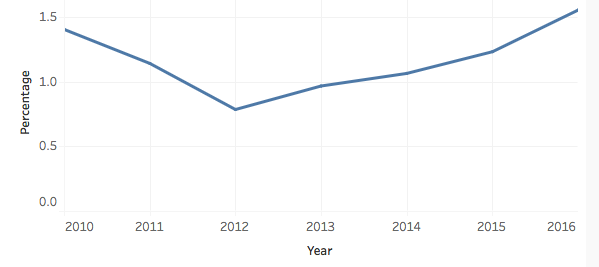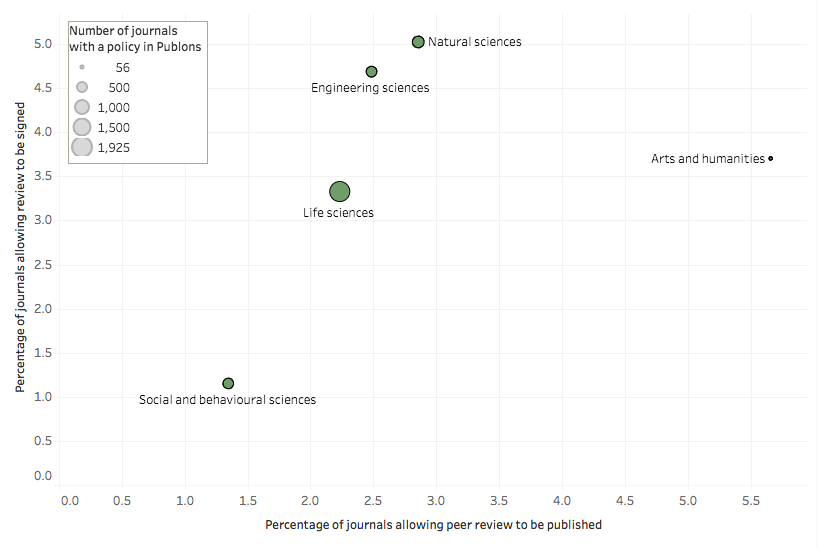The 10th annual International Open Access Week kicked off on Monday, celebrating the benefits of opening up access to research and scholarship.
Open Access refers to the free, immediate, online access and use of scholarly research results. But it’s not a stand-alone concept. Since the 1990s the ideas surrounding open access gained momentum alongside other alternative forms of publishing, including ‘open peer review.’
Peer review has historically been performed in silos and behind closed doors. We know little about who is doing the review (see our Review Distribution Index), what issues are discussed during the review process – or even if review is actually happening (which is the predatory publishing problem).
More transparency is needed to bring a greater level of trust and efficiency to the peer review process, and open review is one way to achieve that.
Here to talk us through what it is and how often it’s used are Sarah Parks and Salil Gunashekar.
Sarah and Salil are two senior analysts at RAND Europe. Both were involved in the development of the European Commission’s Open Science Monitor, and earlier this year they analyzed data on Publons and PeerJ to gather ‘on the ground’ information about open peer review.
Here’s what they found…
Tracking global trends in open peer review
Traditionally, peer review of scholarly publications has followed a ‘closed’ model in which reviewers are anonymous. This so-called ‘blind peer review’ approach continues to be the most common route offered by journals worldwide.
However, since the 1990s some journals have started to experiment with alternative forms of peer review such as ‘open peer review’, which eliminates anonymity with the underlying aim of introducing more transparency into the publication process. Different forms of open peer review exist. These range from models in which the author(s) and reviewer(s) are ‘known’ to each other to journals that publish a complete history of (named) peer review reports along with the published articles.
The advent of open peer review has coincided with the rise of open access publishing and other ‘non-classical’ approaches to the way research is conducted. Collectively, this evolution in research – which is being characterised with a move towards increased transparency and participation, and exploring novel ways of collaborating, communicating and diffusing knowledge – has come to be regarded as ‘open science’.
However, limited evidence, particularly in relation to what is happening ‘on the ground’ in practice, is a challenge for policymaking in this evolving area. To help address this issue and serve as one element towards building a robust evidence base, a new website for monitoring worldwide trends in open science was launched recently as part of a year-long research project carried out by RAND Europe and collaborators for the European Commission. The monitor provides stakeholders, including researchers, policymakers, funders, publishers and libraries with access to data and trends on different characteristics of open science, including open access to publications, open research data, open scholarly communication, and citizen science. As part of open scholarly communication, the monitor includes data from Publons and PeerJ on the use of open peer review.
Open peer review is an important element of open science, as it leads to increased transparency and accountability in the research process and enables reviewers to receive recognition for their work. The open science monitor explores the different types of open peer review that are being used and how this varies by discipline, by country, and over time. In addition, this looks at whether reviewers are using open peer review and whether journals allow open peer review to be carried out.

This visualisation shows the percentage of reviews recorded in Publons where the reviewer wants the review to be open and the journal policy permits this.

This visualisation shows journal policies on (1) reviewers signing their peer reviews and (2) peer reviews being published. The information is sourced from Publons. The size of the bubbles on the plot corresponds to the number of journals in each subject for which Publons contains journal information.
The data shows that currently 3.5 per cent of approximately 3700 journals with peer review policies recorded in Publons allow reviewers to ‘sign’ their reviews, while 2.3 per cent allow peer reviews to be published. The percentages vary between 1 and 6 per cent depending on the field of the journal. In general, research fields with a higher proportion of journals that allow peer reviews to be signed – such as natural sciences – also have a higher proportion of journals that allow peer reviews to be published. The percentage of reviews reported in Publons that are published openly varies by country and subject, averaging at around 1.5 per cent.
Within PeerJ, an open access journal offering a variety of open peer review options, approximately 40 per cent of reviewers choose to identify themselves. Around 70 per cent of authors choose to publish the review history including the reviews and corresponding responses.
Open peer review is happening in a variety of forms, but overall it still accounts for a small percentage of reviews carried out. Despite more journals adopting this alternative approach, it is still not clear whether open peer review is increasing in usage. In the future, as the Publons dataset undoubtedly grows, it will be worth exploring the data in more detail. At the same time, in the collaborative spirit of open science, we welcome suggestions for other data sources on open peer review, or other ways that the Publons data could be analysed to help better understand how open peer review is being used.
The data used to calculate the number of journals with open peer review policies can be found here. We’re looking forward to seeing the new and different ways in which it might be analyzed! Before publishing any information pertaining to this data, please contact us at marketing@publons.com.





